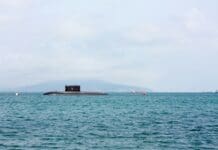This post is also available in:
 עברית (Hebrew)
עברית (Hebrew)
A new wearable cooling device is being developed to help military personnel and emergency responders manage heat-related illnesses in extreme environments. The technology, known as CGX1, is designed to provide rapid, field-ready treatment for heatstroke—a condition that can occur when core body temperature exceeds 40°C.
The system, developed by a company by the name of Cryogenx, weighs just five kilograms, the device includes a set of conductive cooling pads that can be applied directly to the body. These pads are powered by coolant-filled canisters integrated into the design, allowing for near-instant thermal regulation without the need for large equipment or water.
Deployment can be completed within two minutes, making the CGX1 especially suited for time-sensitive scenarios such as combat zones, natural disaster sites, or remote worksites. The entire system is small enough to fit inside a standard emergency response vehicle, and its gas canisters are fully recyclable.
The technology addresses a growing operational concern: heat stress. With rising global temperatures and increasing demand for high-performance tasks in harsh environments, effective cooling solutions are becoming essential for maintaining performance and preventing fatalities.
According to The Defense Post, the device is currently undergoing further development with the support of €1.9 million in seed funding. A significant portion of this funding is earmarked for securing regulatory approval in the US, expanding production, and launching international distribution.
Beyond military and defense use, the CGX1 and its future variants are expected to serve multiple sectors where high temperatures pose routine hazards. These include heavy industry, emergency services, mining, construction, and even athletics.
Once regulatory milestones are achieved, the system is expected to be marketed to both the UK Ministry of Defence and the US Department of Defense, with broader availability in civilian markets to follow. The goal is to offer a practical, scalable solution to a heat-related risk that continues to grow in frequency and severity across operational environments.


























